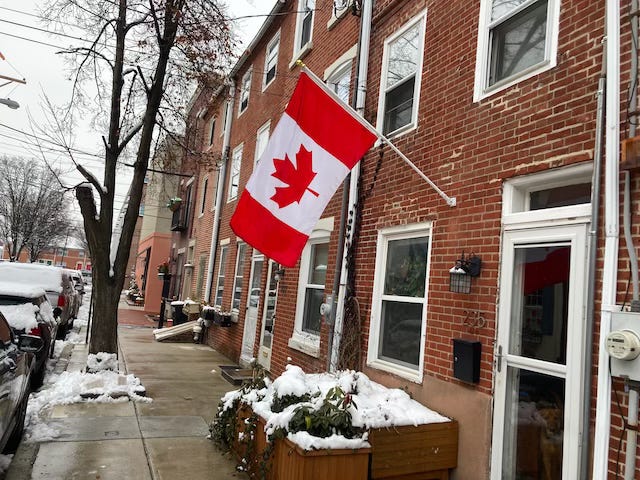Jersey Boy Alito Wrote An Awful Opinion
Amazingly, Dissent Was Written By Fellow Right Winger Coney-Barrett
A Case Of Be Careful What You Ask For
The right wing anti-regulatory US Supreme Court just issued a decision that appears to have gutted core provisions of the Clean Water Act, see:
The victorious plaintiffs from San Francisco issued a press release, bragging:
Large cities and jurisdictions across the country like Boston, New York, and Washington D.C. shared San Francisco’s concerns and submitted amicus briefs supporting the City’s position. The City was joined by more than 60 amici, including the 400 cities represented by the California League of Cities, the 2,800 members of the National League of Cities, the over 2,300 members of the National Association of Counties, the National Association of Clean Water Agencies, and the California Association of Sanitation Agencies.
The decision is being reported in the media as a major rollback of the Clean Water Act, which would allow “raw sewage to be discharged to drinking water supplies”:
That take is clearly over the top, as the case involved an ocean outfall.
But on the legal and practical implications, I say, not so fast.
This could be a case of “be careful what you ask for“. Let me explain.
For my entire career, I’ve heard NJBIA (previously Jim Sinclair, now Ray Cantor), NJCIC (previously Hal Bozarth, now Dennis Hart. Ironically,Dennis used to manage the DEP’s NJPDES water permitting program) and the Chamber of Commerce lobbyists howl about EPA and DEP issuing “prescriptive regulatory mandates” in permits.
They’ve demanded “flexibility” and “performance based” permits.
EPA conceded to those critics and gave them what they asked for.
For decades, EPA has been playing a game by writing vague NPDES permits with broad narrative permit conditions, like: “thou shall not pollute and violate water quality standards” and pursued a policy that “installation of Best Management Practices” (BMPs) meets water quality standards.
This approach got EPA off the hook for having to do all the work to review and write site specific detailed permits with real data and science about potential impacts on water quality and whether the permit conditions would actually meet water quality standards.
In turn, the polluters (permittees) could avoid having to do a lot of technical work in submitting a permit application. The permittee then could rely on this vague permit language under the “permit shield” concept to avoid EPA enforcement and lawsuits by environmental groups. It was very difficult prove a permit violation.
Under the Court’s ruling, it looks like EPA and DEP will now have to write detailed NPDES permits with specific technical and numeric conditions that can be measured and enforced.
Hahaha! No more hiding behind BMPs to protect water quality!
But I think Justice Alito got it badly wrong on the “water quality based effluent limits” (WQBELs) provisions of the Clean Water Act.
As EPA notes, Section 303 of the CWA mandates:
Permit writers must consider the potential impact of every proposed surface water discharge on the quality of the receiving water. If TBELs are not sufficient to meet the water quality standards in the receiving water, the CWA (section 303(b)(1)(c)) and NPDES regulations (40 CFR 122.44(d)) require that the permit writer develop more stringent, water quality-based effluent limits (WQBELs).
How could Alito completely ignore this?
So if the Court’s decision is interpreted to be broader than the EPA Combined Sewer Overflow (CSO) program, then the entire national (and NJ) clean water program is in fact gutted.
In order to air this complex debate and explore the implications of the Court’s decision, I wrote the following to Legislative leaders and DEP Commissioner LaTourette:
———- Original Message ———-
From: Bill WOLFE <b>
To: senbsmith <SenBSmith@njleg.org>, sengreenstein <sengreenstein@njleg.org>, senmckeon@njleg.org, senzwicker@njleg.org, Hansen, Eric, shawn.latourette@dep.nj.gov
Cc: wparry@ap.org, fkummer@inquirer.com, srodas@njadvancemedia.com, O’Neill, James, warrenm@njspotlightnews.org, ferencem@njspotlightnews.org, jonhurdle@gmail.com, Maya K van Rossum <maya@forthegenerations.org>, tracy@delawareriverkeeper.org, agoldsmith@cleanwater.org, dpringle1988@gmail.com, Taylor McFarland, NJ Sierra Club, Anjuli Ramos <anjuli.ramos@sierraclub.org>, Richard Isaac <risaacx@aol.com>, emile@njconservation.org, Matthew Smith <msmith@fwwatch.org>, domalley <domalley@environmentnewjersey.org>
Date: 03/08/2025 12:21 PM EST
Subject: US Supreme Court Clean Water Act decision
Dear Senators and DEP Commissioner LaTourette:
On Friday, the US Supreme Court issued an opinion regarding the Clean Water Act and water quality based effluent limits, see:
The case involved a challenge by the City of San Francisco to an EPA combined sewer overflow (CSO) permit.
As I read the decision, the Court made serious errors in interpreting the Clean Water Act.
The decision now jeopardizes not only the NJ DEP’s CSO permits, but all other permit limits and “water quality based” (WQBEL) effluent limits, including the entire “Total Maximum Daily Load” (TMDL) program for impaired waters.
I urge you to conduct oversight hearings and take public testimony on the implications of this decision and whether new State legislation is required to avoid legal challenges to NJ DEP clean water permits and programs.
Bill Wolfe




